Strong, thorough, scientific , humane, from top to bottom
It can be seen that since the 10th Central Conference of the 13th tenure (September 2024) up to now, under the leadership of the Party Central Committee, directly the Politburo and the Secretariat, the entire political system has demonstrated high unity in will and action, all for the common goals of the Party, the country and the people. With great aspirations, long-term vision, innovative thinking, and close to reality, the Central Committee has made many revolutionary and breakthrough decisions, creating a foundation for the country's development in the new era with the highest goal of improving people's lives, increasingly better meeting the material and spiritual needs of the people.
One of those revolutions is to streamline the apparatus, including the policy of merging provinces and not organizing at the district level.
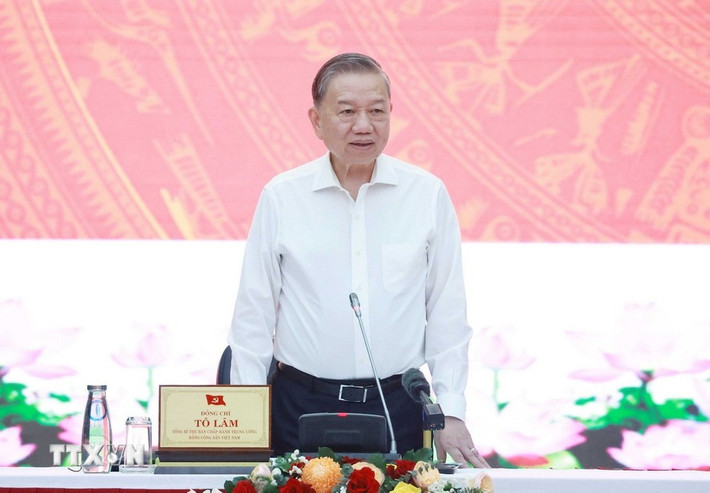
General Secretary To Lam gave a directive speech at the working session with the Standing Committee of the Da Nang City Party Committee and the Standing Committee of the Quang Nam Provincial Party Committee.
Previously, sharing about this policy at the meeting with veteran revolutionary cadres, meritorious people, and typical policy families in the Central Highlands region on the occasion of the 50th anniversary of the Liberation of the South and National Reunification, General Secretary To Lam said that, on the basis of summarizing Resolution No. 18-NQ/TW, with a spirit of determination, urgency, "running and lining up at the same time", not being perfectionist, not being impatient, not being allowed to interrupt work and the new organizational model must be better and more effective than the old model with steps and roadmaps implemented methodically, ensuring adherence to the principles, the Party's Charter, the Central's direction, the arrangement of the apparatus of the political system must be carried out strongly, thoroughly, scientifically, humanely, from top to bottom with the motto "The Central sets an example, the localities respond".
And in just the past 2 months, the Politburo and the Secretariat have issued 21 conclusions and decisions; the Central Steering Committee on the summary of Resolution No. 18-NQ/TW has issued 39 documents guiding and organizing the implementation of activities related to the summary of the implementation of this Resolution. Central agencies, departments and branches, such as the Government, the National Assembly and socio-political organizations... have taken the lead, set an example, and promptly implemented a comprehensive review of functions and tasks, and arranged internal focal points in accordance with the spirit of "refined, compact, strong, effective, efficient and effective". The Government has promptly issued policies to ensure the rights and interests of cadres, civil servants, public employees and workers, contributing to relieving concerns and facilitating the arrangement process. Localities are also actively and proactively implementing the summary, research, and proposal of plans to streamline, terminate operations, merge, and consolidate agencies in a synchronous manner in accordance with the Central Government's direction.
Currently, the Politburo is developing content to submit to the Central Committee for consideration: "Project to merge some provincial-level administrative units, not organize at district level, continue to merge commune-level administrative units"; "Project to rearrange socio-political organizations, mass organizations assigned by the Party and State to be directly under the Vietnam Fatherland Front"; "Policy to amend the 2013 Constitution"...; then will ask for people's opinions.
The above contents, according to the Head of our Party, are all aimed at reorganizing the socio-economic development space to promote socio-economic growth, ensure security and national defense with a vision to 2045 - 2050 and beyond.
The people must be served better!
Accordingly, it is expected that the administrative apparatus will be restructured into 3 levels: Central - Province/City - Commune, Ward. "This organizational structure will aim at the goal of the government and cadres being closer to the people, serving the people better. The government will proactively approach the people instead of the people having to go to the government and create space for socio-economic development of each region, area and country...", the General Secretary affirmed. This is a very new work in thinking.
In fact, through international references, it is shown that over 80% of countries organize a 3-level government model. For us, when organizing a 3-level model, we need to research and clarify: What will the Central Government do; what will the provincial level do and what will the communal government do? For example, the Central Government will focus on national strategies, foreign affairs, defense and security; the provincial level will implement these contents specifically in the locality; and especially the communal level, according to the General Secretary, this is the "most important level", the "place closest to the people", the place to organize and implement all policies and resolutions of the Party, policies and laws of the State. "If the resolution is not implemented to the Party cell, to the Party members, to the people, then perhaps everything will only be on paper", the General Secretary frankly said.
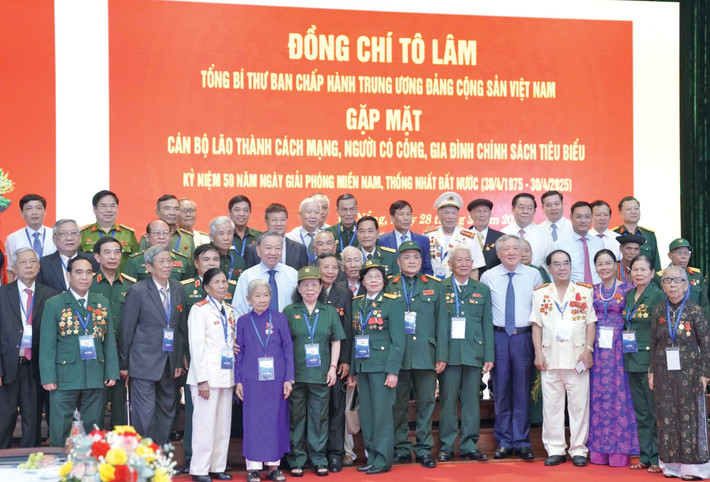
However, in reality, with the current 4-level model, the commune level mainly handles administrative work that is "not decentralized or delegated to take care of the economy, society, health, education..., all of these things are taken care of by the province and district...". Therefore, the problem now is that we have to do the opposite of that process, commune-level cadres must grasp all the thoughts and aspirations of the people; must know what the people want, what difficulties they have, what help they need? These contents must be resolved by the commune, how can the province reach them...", the General Secretary pointed out the role of the commune level in organizing the new model.
Also related to the organizational arrangement, previously, chairing the meeting of the Standing Committee of the Government Party Committee to continue giving opinions on the Project on rearranging and reorganizing administrative units at all levels and building two-level local governments, Prime Minister Pham Minh Chinh stated that the vast majority of opinions and public opinion highly agreed with the policy of rearranging and reorganizing administrative units at all levels and building two-level local governments, to suit the new situation and current management capacity when traffic infrastructure and digital infrastructure conditions have been strongly improved, while creating new development space, maximizing the potential differences, outstanding opportunities, and competitive advantages of each locality.
Regarding the two-level local government model, which is the provincial level (including provinces and centrally-run cities) and the grassroots level, opinions at the meeting agreed to submit to the competent authority a plan that after the arrangement will reduce about 50% of the number of provincial-level administrative units and about 60-70% of grassroots-level administrative units compared to the present.
Most recently, the Ministry of Home Affairs has completed the draft Resolution of the National Assembly Standing Committee on administrative unit arrangement and sent it to the Ministry of Justice for appraisal. Accordingly, for the commune level, the whole country is expected to have about 9,996/10,035 commune-level administrative units subject to arrangement; the total number of communes and wards after arrangement of provinces and cities will be reduced by at least 70% and at most 75% compared to the total number of commune-level administrative units currently in the area.
A major policy with profound institutional innovation will certainly create some concerns among officials and people. People worry about losing their cultural identity, traditional names, about being “merged”, about losing their local status, and wonder if public services will be more convenient after the reorganization; officials worry about the impact on their jobs, income, position, etc.
Understanding all the above concerns and worries, with a dialectical and practical vision, at the meeting with the Standing Committee of the Da Nang City Party Committee and the Standing Committee of the Quang Nam Provincial Party Committee, General Secretary To Lam requested that Party committees and authorities at all levels need to explain, dialogue, ensure smooth administrative operations, fast and convenient public services, promote the application of information technology in handling administrative procedures, preserve traditional names in various forms, build historical - cultural databases..., properly implement the policy of "the new must be better than the old", "the people must be better served".
Affirming that streamlining the apparatus is a task that cannot be delayed any longer, General Secretary To Lam emphasized that this is a revolution, an institutional breakthrough preparing for the “hundred-year vision” of national development. All institutional reforms must be for the practical and long-term interests of the people.
Based on the criteria stipulated in the draft Resolution of the National Assembly Standing Committee on administrative unit arrangement drafted by the Ministry of Home Affairs and sent to the Ministry of Justice for appraisal, it is expected that 52 provincial-level administrative units will be reorganized, including: 4 cities: Hai Phong, Ho Chi Minh City, Da Nang, Can Tho and 48 provinces: Ha Nam, Hung Yen, Vinh Phuc, Bac Ninh, Thai Binh, Hai Duong, Nam Dinh, Ninh Binh, Bac Kan, Thai Nguyen, Phu Tho, Bac Giang, Hoa Binh, Tuyen Quang, Lao Cai, Yen Bai, Ha Giang, Ninh Thuan, Quang Tri, Phu Yen, Quang Binh, Quang Ngai, Khanh Hoa, Dak Nong, Tay Ninh, Binh Duong, Binh Thuan, Binh Phuoc, Ba Ria - Vung Tau, Ben Tre, Bac Lieu, Vinh Long, Hau Giang, Tra Vinh, Tien Giang, Soc Trang, Dong Thap, An Giang, Long An, Ca Mau, Quang Nam, Binh Dinh, Dak Lak, Dong Nai, Gia Lai, Kon Tum, Lam Dong, Kien Giang.
Along with that, there will be 11 provincial administrative units that will not be reorganized, including Hanoi, Hue City, Lai Chau, Dien Bien, Son La, Lang Son, Cao Bang, Quang Ninh, Thanh Hoa, Nghe An, and Ha Tinh.
Source: https://daibieunhandan.vn/buoc-dot-pha-chuan-bi-cho-tam-nhin-tram-nam-phat-trien-dat-nuoc-post408801.html




![[Photo] Prime Minister Pham Minh Chinh attends the groundbreaking ceremony of Trump International Hung Yen Project](https://vphoto.vietnam.vn/thumb/1200x675/vietnam/resource/IMAGE/2025/5/21/ca84b87a74da4cddb2992a86966284cf)
![[Photo] Scientific workshop "Building a socialist model associated with socialist people in Hai Phong city in the period of 2025-2030 and the following years"](https://vphoto.vietnam.vn/thumb/1200x675/vietnam/resource/IMAGE/2025/5/21/5098e06c813243b1bf5670f9dc20ad0a)
![[Photo] Prime Minister Pham Minh Chinh receives Rabbi Yoav Ben Tzur, Israeli Minister of Labor](https://vphoto.vietnam.vn/thumb/1200x675/vietnam/resource/IMAGE/2025/5/21/511bf6664512413ca5a275cbf3fb2f65)
![[Photo] Determining the pairs in the team semi-finals of the National Table Tennis Championship of Nhan Dan Newspaper](https://vphoto.vietnam.vn/thumb/1200x675/vietnam/resource/IMAGE/2025/5/21/eacbf7ae6a59497e9ae5da8e63d227bf)



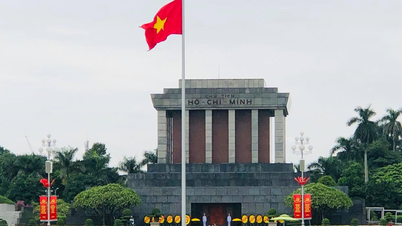

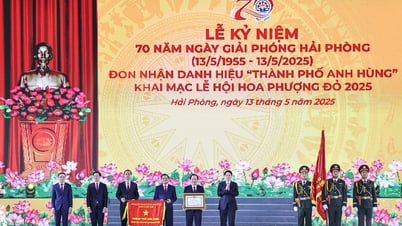

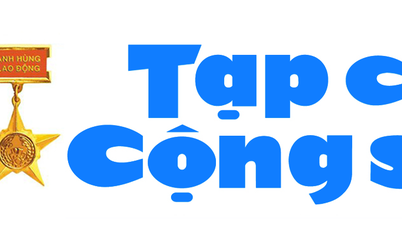






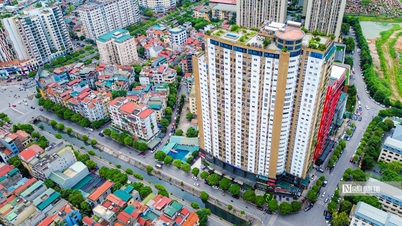


































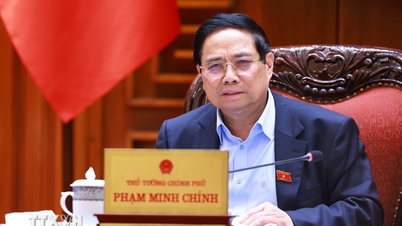



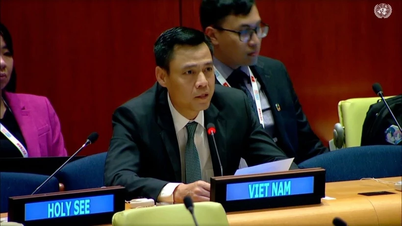
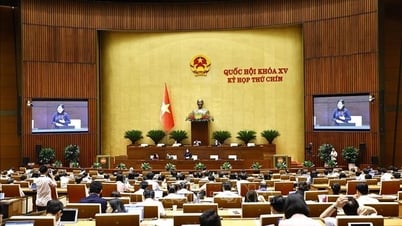

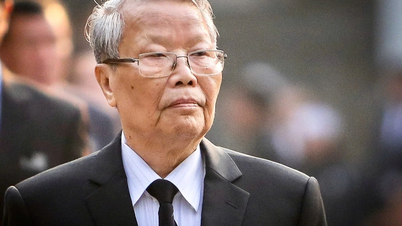








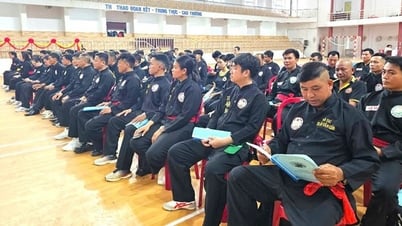


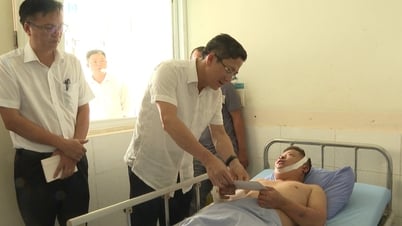








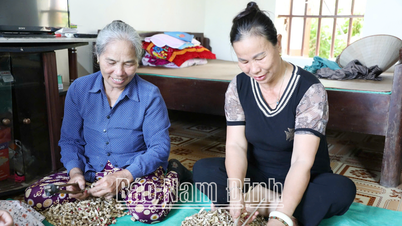











Comment (0)